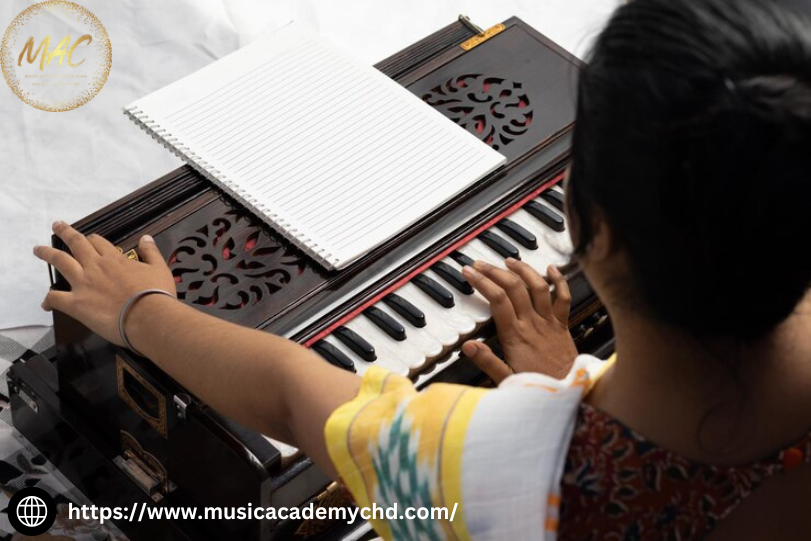Suppose there is a student who is eager to learn piano and is currently in front of the computer. They start with the video lesson, and after weeks, they are stuck. No progress. Frustration builds up. This is a more frequent occurrence than one would imagine. It is not always a matter of working harder; it is a matter of not making some errors. For anyone in search of online piano classes in Chandigarh or music classes in Chandigarh, it is useful to know these things.
Skipping the Basics: The Silent Progress Killer
One big mistake? Starting with complex songs without first learning the basics of the game. It is like attempting to run when one has not even learned to walk. Music Academy Chd also underlines the importance of such elements as finger positioning, scales, and rhythm. Without them, even the most basic melodies become unattainable.
- Always start with beginner-friendly exercises.
- It is recommended to spend at least 15 minutes per day on hand posture exercise.
- Apps or metronomes should be used in order to enhance the timing.
In most cases, the online piano classes in Chandigarh incorporate features to monitor the progress. These resources make sure that none of the steps is omitted. If one skips steps, he or she is likely to face challenges when completing the remaining steps later on.
Ignoring Feedback
Another common issue? Ignoring feedback from instructors. Some students have a mentality that says, “I will do it myself.” But here is the reality: constructive criticism is precious. Teachers at Music Academy Chd stated that feedback enables correction of small errors before they become a problem. For instance, playing a wrong note may become a habit if it is done several times.
- Record the practice sessions and then compare them with the notes taken by the instructor.
- Ask specific questions during live sessions.
- If you have any difficulties with the material, do not hesitate to go through the previous lessons again.
Music classes in Chandigarh place considerable emphasis on the feedback that is given to the learners. This way, there is constant progress over time.
Overloading the Schedule: The Burnout Trap
Some of the common mistakes that many students make include many students registering for many classes or setting high goals for themselves. It is quite thrilling to think of mastering a song in two days, but it is hardly possible. Overloading leads to burnout. Instead, aim for consistency. It is better to practice for 20-30 minutes daily rather than practicing for several hours in a week.
- Break lessons into smaller chunks.
- Savor the moments, like when you finally master a difficult chord.
- Do not work for long hours because this will lead to mental fatigue.
This way, the workload does not cause stress but makes online piano classes in Chandigarh fun.
Neglecting Technology: The Hidden Hurdle
Technology is very important in online learning. Internet connections, microphones, and keyboards are some of the peripherals that can greatly affect the quality of the experience. It is like playing piano with sticky keys; everything becomes slow and tedious. Music Academy Chd suggests that it is wise to use good equipment. A good MIDI keyboard and a stable internet connection are essential for this.
- Test devices before each session.
- Keep backup chargers handy.
- It is recommended to use headphones to listen to the differences in details.
Music classes in Chandigarh help the students to select the right equipment for effective learning.
Lack of Patience: The Biggest Enemy
Finally, patience matters. Learning an instrument takes time. The problem with expecting immediate success is that it is impossible. Instead, enjoy the process. Focus on gradual improvement. Some of the achievable goals include playing a full scale within a month.
- Track weekly achievements.
- Share with friends or family.
- To remain motivated, one should listen to favorite pianists.
Online piano classes in Chandigarh also teach the students to appreciate each achievement made by the learners. Still, music is not a race; it is a journey.
If students do not make these mistakes, they can really get the best out of online piano classes in Chandigarh and music classes in Chandigarh. It is evident that with hard work and good planning, anyone can achieve his/her dream of becoming a musician. So, start learning today, be consistent, and let the music come on its own; take that first step.









